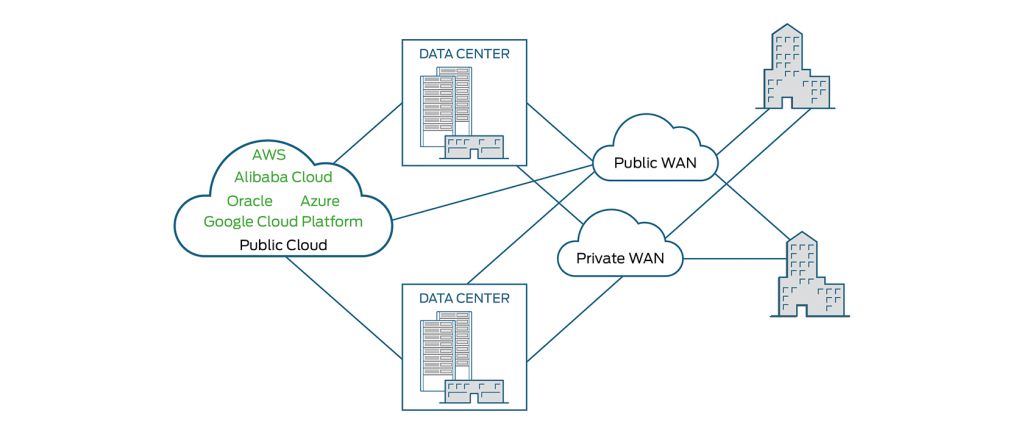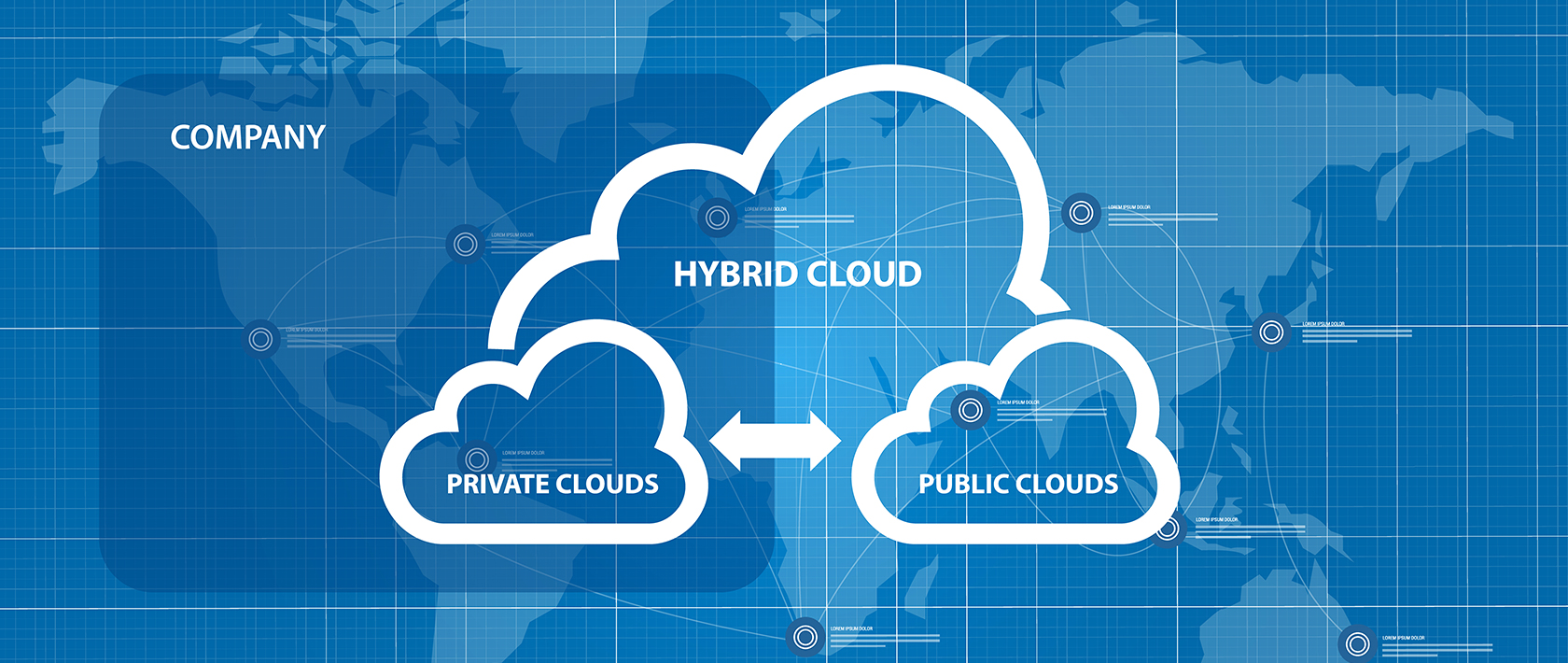Multi-cloud is the use of multiple cloud computing services in a single, heterogeneous architecture. In a multi-cloud environment, cloud assets such as computing, software, applications, technologies etc. are distributed across several cloud-hosting environments. A multi-cloud setup involves an enterprise leveraging two or more cloud platforms, each of which delivers a specific application service.
An archetypal multi-cloud architecture is comprised of two or more public cloud computing environments, as well as an assortment of private clouds and dedicated data centre assets. The multi-cloud environment, in general, intends to eliminate the reliance on a single cloud provider.

Why have we arrived at Multi-cloud computing?
Businesses need more than a single cloud computing provider to cater for the variety of their computing needs. An effective multi-cloud strategy means multiple vendors supply the cloud computing capability along with the scale and security to go with it. The result is flexible options across the entire enterprise that ensures each department selects a service that works best for its needs.
The availability of multi-cloud is one of the most significant benefits and causal factors of enterprises deciding to implement a multi-cloud strategy. If one cloud service goes offline, the enterprises can leverage another cloud service to continue work.
Multi-cloud environments also cater for flexibility, in that, a business can opt to work with the best of breed cloud services for particular workloads, or to suit specific business needs. The economics and geographical location are also better catered for in a multi-cloud setup. A multi-cloud approach offers better security and redundancy than a single cloud deployment. The severity of distributed denial-of-service (DDoS) attacks is diminished in a multi-cloud environment as DDoS attacks don’t affect all clouds within a multi-cloud arrangement. Another benefit of multi-cloud adoption is that it allows for an enterprise to avoid vendor lock-in as the data is stored on various clouds.
Research by the IBM Institute for Business Value found that most enterprises (approximately 85% per cent) already operate in multi-cloud environments. The remainder, plan to do so. It is expected that by 2021, 98% of companies will leverage a multi-cloud strategy.
How does ‘Multi-cloud’ differ from ‘Hybrid Cloud’?
Multi-cloud is sometimes incorrectly referred to as a hybrid cloud, and vice versa. The confusion between hybrid and multi-cloud is exacerbated by the fact that they are used interchangeably. It might appear to be just a linguistic argument. But it is not. As multi-clouds become more ubiquitous, the difference between multi-cloud and hybrid cloud becomes more pertinent.
Note that hybrid cloud is an infrastructure choice, whereas multi-cloud is a strategic choice. Multi-cloud and hybrid cloud setups vary. Multi-cloud refers to multiple cloud services, whereas hybrid cloud refers to multiple deployment modes, such as public cloud or private cloud.
Furthermore, in a multi-cloud environment, the offerings from different cloud vendors need not be fully synchronised. This is not essential to complete a computation process.

Why would an enterprise deploy a multi-cloud architecture?
The three most common reasons our customers choose multi-cloud are:
- Leverage the best of each vendor
Leveraging multi-cloud is akin to leveraging best of breed applications. No single provider can offer all the features and variables desired by different customers. If your business is currently subscribed to one cloud provider, could you be vulnerable to sudden price hikes or changes of service? - Manage data across geographical boundaries
If your business exists across diverse geographies, multi-cloud setups can benefit your business because they allow you to manage data across geographical boundaries in specific locations. Leading cloud providers such as Amazon, Microsoft and Google have global data centres. Often, organisations that leverage the global capability of cloud providers want to store workloads within specific national boundaries. Multi-cloud allows for this. - Prevent data loss
GDPR came into effect in 2018. The regulation mandates new data management requirements on organisations. New technologies like serverless computing, containers and machine learning are gaining in popularity due to the security benefits they offer. Serverless computing is particularly popular as it enables cloud instances to be scaled and patched immediately, reducing cyber risk. Through machine learning, businesses can identify and respond to patterns of malicious behaviour faster than what humans can. The distribution of information is across various platforms. Therefore, a multi-cloud strategy can prevent data loss if one manages multiple clouds appropriately.
What are the downsides of a multi-cloud strategy?
There are several benefits of a multi-cloud strategy. However, there are also some negatives or at least downsides. Multi-cloud setups have several components to them and the multiple moving parts. This creates resiliency challenges. Security in a multi-cloud structure is more complex, as is governance. Owing to an abundance of choices, it can often become challenging to pick the right providers. Incorporating a multi-cloud setup introduces the challenge of integration across the various cloud setups and services.
Multi-cloud also possesses unique security vulnerabilities. Multi-cloud architectures leave the enterprise vulnerable to other attacks. Multi-cloud setups require a firm to apply security controls to a multi-cloud environment. A single cloud environment is comparatively simple to secure. In a multi-cloud environment, an organisation cannot merely apply a firewall around and about the multi-cloud set up to defend from hackers and viruses. In a multi-cloud environment, an enterprise must maintain due diligence in knowing each of its cloud service providers’ security measures and to then identify the steps it needs to take to secure the gaps in security coverage.
What are the common hurdles in implementing multi-cloud?
Although enterprises are excited about the potential of multi-cloud strategies, there are potential challenges. You can manoeuvre around it though. These are some of the challenges you can anticipate:
- How you define, implement and test cloud security architecture
- Challenging network mapping requirements to cloud capabilities
- The expertise of staff including cloud acquisition and architecture
Having an exit strategy is vital so that you can ‘break up’ with a vendor without it causing massive disruption at an enormous cost. Always think about how you can move away from a vendor if you choose them. Establish how you will move your data and consider cost and time implications.
When you map out your multi-cloud strategy, you must consider data, storage and potential downtime. Having a service level agreement (SLA) that assurances 99% or more uptime will ensure that vendors’ downtimes don’t affect your business. Your cloud provider also needs to mirror your internal efforts to meet regulatory and security obligations if you do not want to be liable for data exposure in the cloud. Put a contract together and insist on auditing their controls.
You must also have the following in place:
- Data Security: The risk of data breaches is more likely if your organisation has insufficient skills, or inadequate security management practices in data and data access when it comes to distributed credential management.
- Data Availability and Compliance: It is up to your company to ensure that the required level of compliance is maintained, be it on-premises or in the cloud. It’ll ensure that you maintain the appropriate level of access to information assets.
It is also essential to look at permissions. You must have a policy and procedure in place to control outdated logins and permissions. If you have outdated credentials, hacking can occur on a ‘secure’ private cloud or single-tenant software. Policies should be in place to deal with increasing mobile devices and enterprise applications.
Another challenge is outages. It’s imperative to maintain uptime of services to retain customers. Enterprises must invest in robust infrastructure and megabit speeds to accommodate their enterprise cloud appetites.
What are some necessary multi-cloud skills?

If you want to architect, implement and manage a multi-cloud architecture, you need an IT team with a unique combination of skills, including technical and business skills. Your team needs to include individuals with cross-platform tools and automation experience. They’ll also need knowledge of API management and data integration best practises. You’ll need the services of a cloud service broker. They’ll shift resources to different cloud providers so that you can take advantage of price and business model differences.
It’s also critical that you implement a standardised framework to deliver, catalogue and operate services in your multi-cloud model. A cloud architect and project manager will help reduce the complexity of your organisation’s multi-cloud architecture. The cloud architect handles API and data integration between the cloud and on-premises environments. The more enterprises move their architecture off-premises, the more internal IT functions will shift towards the orchestration and integration of resources.
A multi-cloud strategy also requires other more niche skills. The IT team needs to have someone that can perform trend analysis against various application workloads both on-premises and across multiple platforms. Multi-cloud organisations need professionals with more advanced coding skills, knowledge of infrastructure as code, experience with CI/CD pipelines as well as automated testing and deployment. It is also essential to look at emerging technologies like containers and microservices that make it easier to develop portable and loosely coupled applications.
In closing

The drivers behind multi-cloud adoption are evident and clear. Avoiding vendor lock-in, cost-efficiency, optimised performance, lowered risk of DDoS, increased scale, improved reliability etc. Avoiding vendor lock-in is plausibly the most attractive benefit of adoption multi-cloud. When businesses adopt a multi-cloud strategy, they move the leverage from the cloud service provider to themselves.
A multi-cloud approach trains an organisation to cater to multiple providers. DevOps teams, infrastructure teams and dev teams realise that the workloads may transfer between providers.
Each benefit of a multi-cloud strategy can help create or maintain a competitive advantage in today’s digital economy. Realising these benefits and gaining value from them requires a well thought out, well developed, clearly defined and purposefully crafted strategy.
Limepoint has the skills to assist you with:
Cloud Strategy – Applying a technical mindset to a business problem allows the cloud conversation to become more relevant. It’s no longer about making one application or part of your business more efficient, but how entire enterprises can transform to move faster and more effectively than the competition.
Cloud Enablement – With Cloud getting easier, it can be tempting to rush in and start provisioning technology, but it can become very chaotic alongside traditional systems and processes. We can help enterprises understand how departments can become more agile and flexible through automation to speed up your long-winded processes.
Cloud Migration – There are many benefits to moving to the cloud, but knowing exactly how to move enterprise scale infrastructure, legacy applications and multiple workloads in no easy task. We can help you with this.
If you want to partner with a provider that can help you move your enterprise workloads to multi-cloud environments, Contact us for a free consultation.



